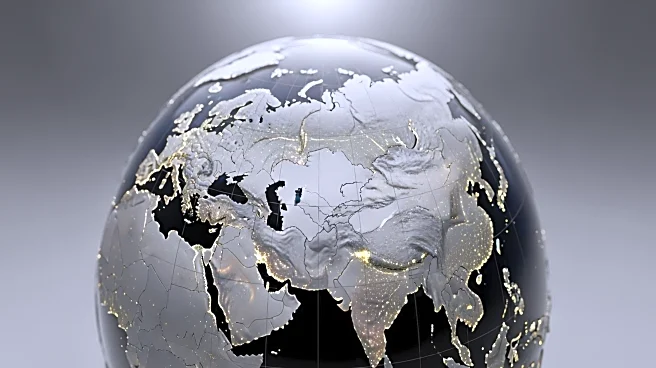What's Happening?
China is developing a new rare earth licensing regime aimed at expediting shipments, according to industry insiders. The Ministry of Commerce has informed some exporters about the possibility of applying for streamlined permits in the future. This move
follows an agreement between President Trump and Xi Jinping, where China agreed to pause its export restrictions for one year. Despite this, China's commerce ministry has not publicly addressed broader controls introduced in April, which have disrupted global supply chains. The new licenses are expected to be valid for a year and may allow larger export volumes, although they do not signify a complete removal of the existing export controls.
Why It's Important?
China's rare earth export controls have significant implications for global industries, particularly in the U.S., as China produces over 90% of the world's processed rare earths. These materials are crucial for manufacturing products like cars and missiles. The restrictions have previously caused shortages, affecting sectors such as the auto industry. The introduction of new licenses could alleviate some of these supply chain disruptions, but the process remains complex and lengthy. Companies involved in defense or sensitive areas may face additional challenges in acquiring these licenses, impacting their operations and strategic planning.
What's Next?
Industry insiders expect more clarity on the new licensing regime by the end of the year. Companies are preparing the necessary documentation, which will require detailed information from customers. The process of obtaining general licenses may take months, and the impact on export volumes will depend on how quickly these licenses can be issued. Stakeholders in the U.S. and other affected countries will be closely monitoring developments, as the ability to secure rare earth materials is critical for various industries.
Beyond the Headlines
The rare earth export controls highlight the geopolitical leverage China holds in its trade relations with the U.S. The ongoing restrictions and licensing requirements underscore the strategic importance of diversifying supply sources for rare earths. This situation may prompt countries to invest in alternative sources or technologies to reduce dependency on Chinese exports, potentially leading to shifts in global trade dynamics and innovation in material science.















